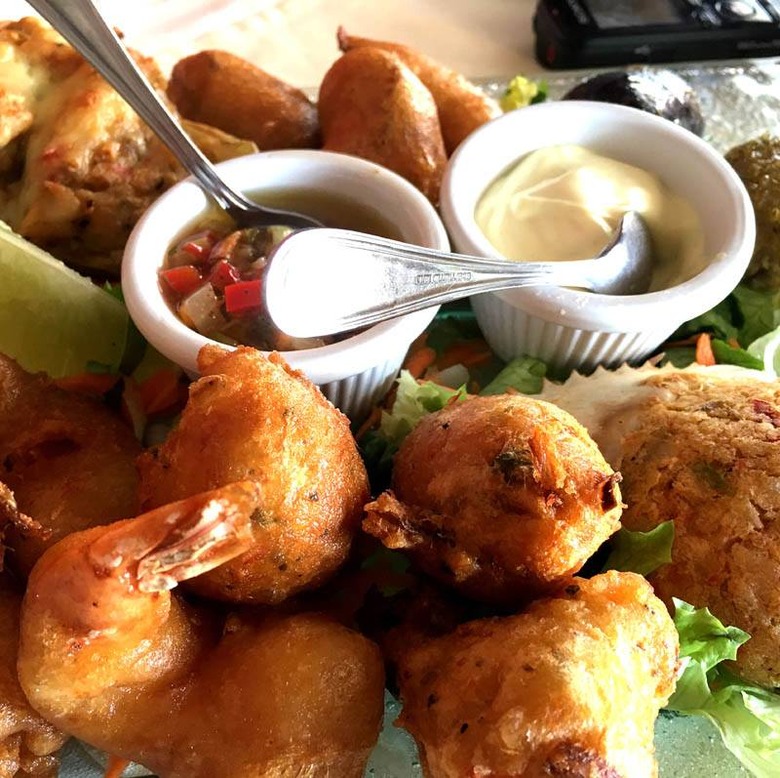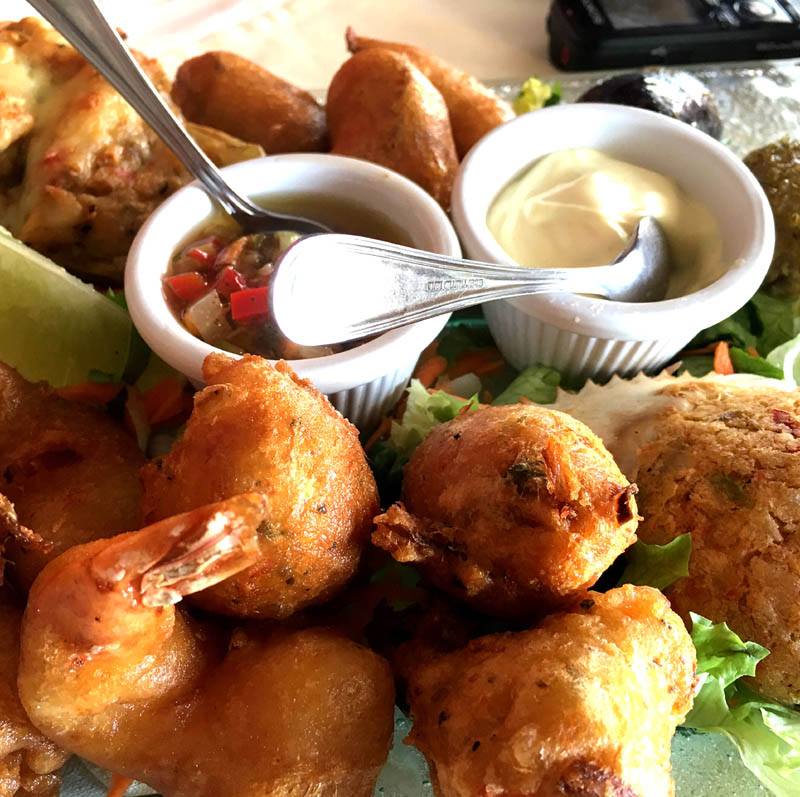The Collective Culture And Creole Cuisine Of St. Martin
The Caribbean paradise of St. Martin is the smallest island in the world shared by two countries; in this case, those countries are France and the Netherlands. Tourists can travel between the two sides to check out the beaches and the many activities available on the island's interior, including hiking, horseback riding, and even zip-lining!
Most visitors to St. Martin come via cruise ship, usually only enjoy about six hours of leisure time on the island, and likely only see the duty-free shops or a beach bar. But it's the folks who fly and stay for at least a couple of days who really get to enjoy all that the "gastronomic capital of the Caribbean" has to offer.
The capital of the French side is Marigot, a colorfully-faceted jewel of approximately 6,000 permanent inhabitants situated alongside the Bay of Marigot. On one of the hills overlooking the town and the bay are the ruins of Fort Louis, a fortification from colonial times. This landmark dates from the late 1700s, when the Dutch, English, and Spanish fought over the island, and slave labor was used in the various industries. Many people climb the stone steps to see the fort and the historical markers in the area, but most come because they want to take in the breathtaking views of the town below. Here, they have a great panorama of the sparkling blue water dotted with boats and the shapes of neighboring islands in the distance.
As you walk along the streets of Marigot — or any town on the island — you'll breathe deeply of the aromas coming from the many cafes, boulangeries, and restaurants. In particular, there will be the smell of Johnny Cakes (cornmeal flatbread) or fish cakes, two popular take-out snacks.
While the French side's capital city has plenty of restaurants, the best place to go is a small district on the outskirts of Marigot called Grand Case. The main street, Boulevard de Grand Case, is lined with dozens of eateries, each one a gastronome's delight. There is always seafood available on the menu, such as grilled wild grouper or mahi mahi filet, and there will be steak, lamb, and sweetbreads to tempt your palate as well.
Le Pressoir is particularly famous for its French food and history. It is located near the salt ponds where, hundreds of years ago, slaves worked to collect the salt left behind after water had evaporated and break the crystals apart in a salt press. The restaurant is owned by chef Franck Mear, and the food, service, and presentation are impeccable — as is the authentic French experience. Be sure to try their house dessert: a dome of chocolate served with a little surprise.
La Villa Royal features tasty French-Creole cuisine, but it also has a killer coconut mousse and guavaberry colada. Guavaberries (not to be confused with the guava fruit) come from a shrub that grows in the only Caribbean, and while its jam is popular, the most common and traditional use of this berry is as an ingredient in the local rum.
If dining at a few of the delectable restaurants makes you wish you could cook in a similar style, you can actually learn how. Jewel Daal, a local chef who has been preparing her signature Creole dishes for over 25 years, will give you a private lesson in how to best prepare her most popular items. Ms. Daal will also prepare a meal for you and your guests, if so desired. She's essentially a celebrity on St. Martin, and the concierge at your hotel will be able to put you in touch with her.
Demographically, St. Martin is a melting pot, with more than 140 nationalities represented in its 77,000 permanent inhabitants. Descendants of the Dutch, British, and Spanish colonizers, the Africans who were freed after slavery was abolished in 1848, and the new immigrants from other Caribbean locales combine to make the island a cheerful and inviting destination for all.
Although St. Martin is beautiful to visit year-round, in mid-February, Carnival is held in the streets of Marigot, and more than 200 people of every age don costumes and painted faces and dance through the streets to the accompaniment of pulse-pounding music emanating from sound trucks. If you miss the Carnival on the French side, don't fret: You can experience a larger version the Dutch side at the end of April.
Whether you want to relax on a beach, indulge in water sports, hike, zip through the air at the Loterie Farm (and sample snacks at its tapas bar or Hidden Forest Café), or simply try as many different cuisines as possible, you'll absolutely enjoy St. Martin and its signature "Caribbean cool."

